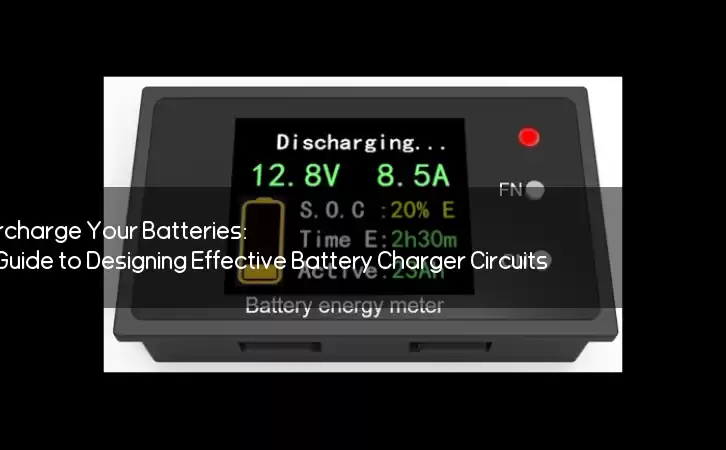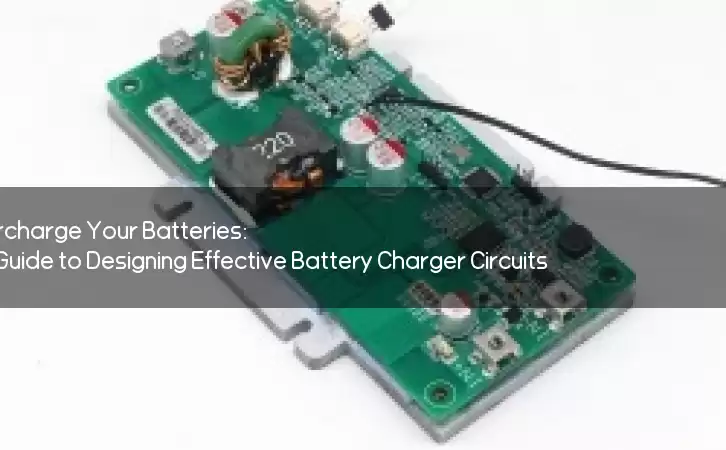Information Center
Supercharge Your Batteries: A Guide to Designing Effective Battery Charger Circuits
Published:2023-04-20 19:40:23 Author:Green WCND Views:84A battery charger circuit is an electronic system that allows you to recharge a battery, typically using AC power. There are many different types of battery charger circuits available, with varying degrees of complexity and performance. In this article, we will explore some of the basic concepts of battery charging circuits and some typical circuit configurations.

One of the primary considerations in designing a battery charger circuit is the type of battery being charged. Different types of batteries have different charging requirements, and failure to adhere to these requirements can result in reduced battery life or even battery failure.

One common type of battery charger circuit is the linear charger. Linear chargers use a simple voltage regulation circuit to regulate the charging current and increase the voltage to the battery to the appropriate level. This type of charger is relatively simple and low cost, but it can suffer from reduced efficiency and longer charging times.
Another type of battery charger circuit is the switch-mode charger. Switch-mode chargers use a more complex circuit design that allows for greater efficiency and faster charging times. These chargers are typically more expensive than linear chargers but can be a good choice for charging high-capacity batteries quickly.
Modern battery chargers often include features such as automatic cutoff and temperature monitoring to prevent overcharging and overheating. These features help to ensure that your batteries remain safe and are not damaged during the charging process.
There are many different types of batteries that can be charged using a battery charger circuit, including lead-acid, lithium-ion, and nickel-cadmium batteries. Each of these types of batteries has its charging requirements, and it is essential to understand these requirements when designing a battery charger circuit.
In conclusion, a battery charger circuit is an essential tool for maintaining and recharging batteries. Whether you are designing a simple linear charger or a more complex switch-mode charger, it is important to understand the requirements of the battery being charged and to incorporate features such as automatic cutoff and temperature monitoring to ensure safe and efficient charging. With the right equipment and knowledge, you can keep your batteries in top condition and get the most from your electronic devices.
Power Adapter Design and Customization Guide for Portable Electric KettlesI. Common Design Types for Portable Electric Kettle Power AdaptersPortable electric ke···
I. Common Design Types of Power Adapters External Independent Type (Most Common) Design: A standalone adapter (e.g., "black brick") connected to the p···
Handheld Vacuum Cleaner Power Adapter Selection GuideIntroductionHandheld vacuum cleaners have become a mainstream tool for household cleaning due to their port···
Drill Power Adapter Selection Guide.drill-container { font-family: Arial, sans-serif; line-height: 1.6; max-width: 800px; margin: 0 auto; padding: 20px; } .dril···





